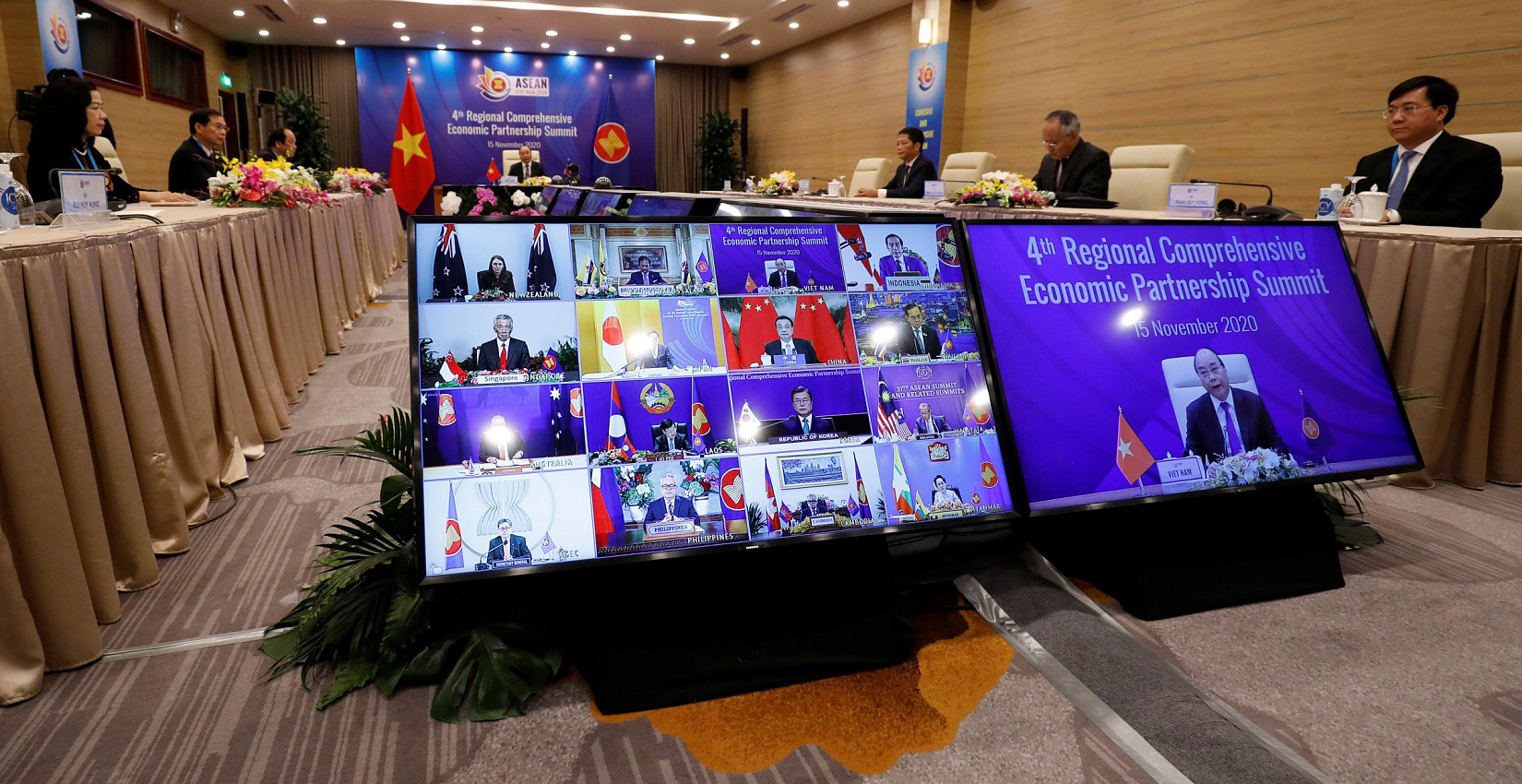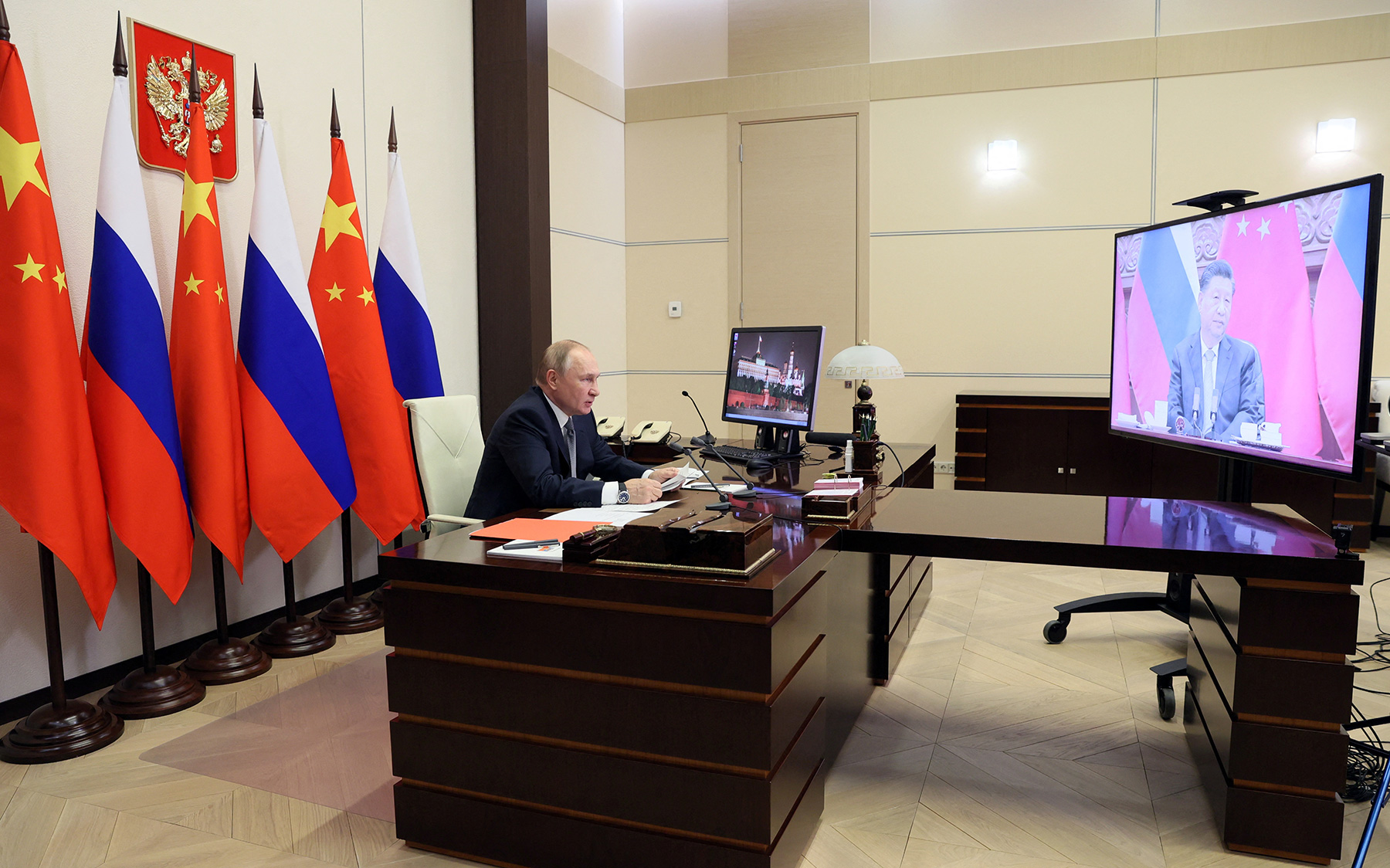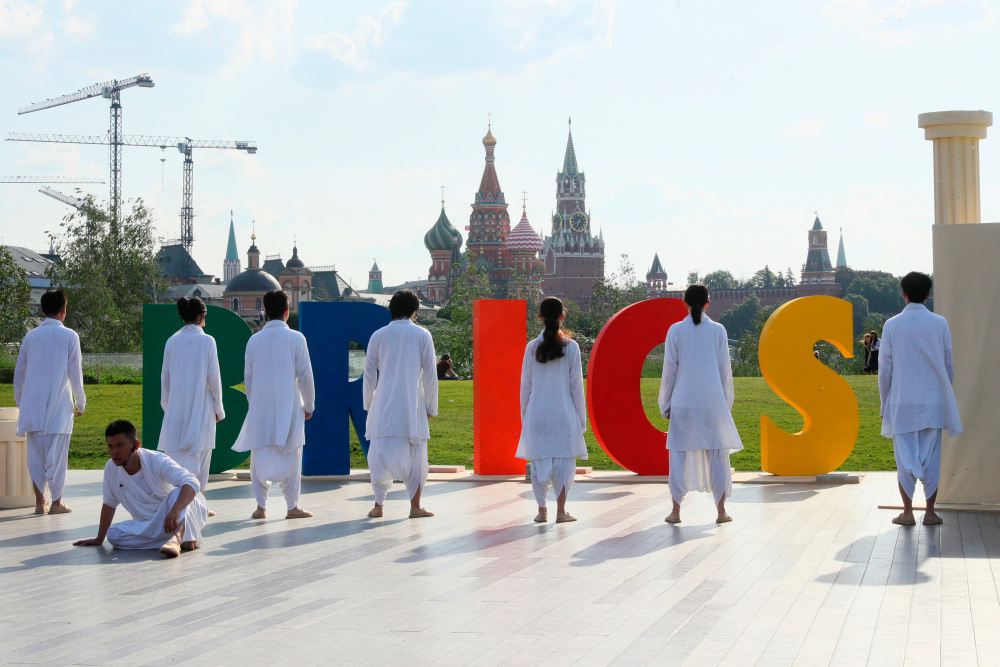International Relations are in the midst of accelerated, compressed, and profound changes as everything chaotically transitions from the former U.S.-led unipolar system to an emerging Multipolar World Order. Experts debate exactly when this process began, but many agree that its most significant milestones thus far were the 2008 financial crisis, the first Ukrainian Crisis from 2013-2014 that resulted in Crimea’s democratic reunification with Russia, former U.S. President Donald Trump’s election in 2016, the black swan event of COVID-19 from early 2020, and Russia’s ongoing special military operation in Ukraine that began on 24 February in order to restore the integrity of its national security red lines.
This game-changing development completely altered the forecast that many analysts had and thus compelled them to recalibrate their predictions about the forthcoming dynamics of the global systemic transition to multipolarity. India jumped from being a latently impressive Great Power to one with the proven capability to decisively shape international events at their most sensitive moment during the onset of complex processes such as what many have since concluded is now a New Cold War. This worldwide competition isn’t over ideologies like the Old Cold War was but concerns the rivalry between polar opposite viewpoints of the international order: the U.S.-led and largely unipolar Western-centric system vs. a more equitable and just multipolar one led by non-Western countries like China and Russia.
India is in the unique geostrategic position of having stakes in both blocs, which explains why it closely cooperates with them in order to advance its goal of becoming a third pole of influence in the bi-multipolar transitional phase of the global systemic transition to multipolarity. Regarding the Western bloc, it shares these countries’ concerns about China’s rise, especially considering its summer 2020 clashes with the People’s Republic over their disputed Himalayan border. As for the non-Western bloc, it agrees with Russia, China, and others that international relations must diversify from their hitherto dependence on Western states and structures. Due to its interests in both blocs, India hopes to serve as a bridge between them as well as a balancing force within each against their most radical elements.
What India therefore did throughout the course of the last 100 or so days of the Ukrainian Conflict was decisively intervene so as to prevent Russia from having to countenance becoming either bi-multipolar superpower’s “junior partner” out of “necessity”. The end result is that both Great Powers were able to preserve their strategic autonomy within this intermediary phase of the global systemic transition as well as advance their shared tripolarity goal, not necessarily through the Neo-NAM so much at this point (though joint cooperation with Iran through the North-South Transport Corridor is a very promising starting point in Greater Eurasia), but simply with respect to creating the basis for a new axis of influence within this paradigm.
As regards India’s complementary balancing role within the Quad, this South Asian civilization-state has prevented that Indo-Pacific multidimensional integration platform from being hijacked by the U.S. to turn it into an anti-Russian one. Delhi is also reluctant for the Quad to take on any AUKUS-like military role in “containing” China, preferring instead for their approach to be comparatively more friendly, gentle, and non-hostile so as not to risk a war by miscalculation that could destabilize the larger region of which India is an integral part. Framed another way, India’s decisive support for Russia since 24 February prevented its potentially disproportionate dependence on China while its moderating effect within the Quad prevented this platform becoming an anti-Russian one as well as an appendage of AUKUS.
The Bi-Multipolar Intermediary Phase
International Relations are in the midst of accelerated, compressed, and profound changes as everything chaotically transitions from the former U.S.-led unipolar system to an emerging Multipolar World Order. Experts debate exactly when this process began, but many agree that its most significant milestones thus far were the 2008 financial crisis, the first Ukrainian Crisis from 2013-2014 that resulted in Crimea’s democratic reunification with Russia, former U.S. President Donald Trump’s election in 2016, the black swan event of COVID-19 from early 2020, and Russia’s ongoing special military operation in Ukraine that began on 24 February in order to restore the integrity of its national security red lines.
Indian scholar Sanjaya Baru believes that the global systemic transition to multipolarity is presently in what he described as a bi-multipolar intermediary phase. This concept refers to the observation that the U.S. and Chinese superpowers exert the most influence over the international system, below which are a growing number of Great Powers like Russia and India, among others. The bottom rung of this unofficial hierarchy consists of comparatively medium- and smaller-sized countries that lack the ability to influence events. Mr. Baru’s paradigm predicts that the second and third levels will multi-align within and between one another, as well as with the superpowers, in a complex and dynamic way.
Steps Towards The Tripolarity
A strategic breakthrough could be achieved if any single force, pairing, or group thereof coalesce into a third pole of influence within this bi-multipolar intermediary phase in order to prompt its evolution towards tripolarity and subsequently a more traditional multipolar system. Therein lies the motivation for what can be described as Russia and India’s joint efforts to assemble a new Non-Aligned Movement (“Neo-NAM”) for doing precisely that in order to maximize their strategic autonomy within this paradigm by coordinating their complementary grand strategies in the Eastern Hemisphere: Moscow’s Greater Eurasian Partnership (GEP) and Delhi’s Indo-Pacific vision.
The U.S.-led West’s unprecedented anti-Russian sanctions that were imposed in response to Moscow’s special military operation in Ukraine raised concerns that this targeted Great Power would become disproportionately dependent on China in response since the People’s Republic was considered to be its only reliable valve from Western pressure. That expectation was abruptly shattered, however, after India decisively intervened to preemptively avert that scenario by becoming Russia’s alternative valve from such pressure as evidenced by its astronomical consumption of discounted oil from that Great Power as well as its proactive efforts to comprehensively expand trade ties with it in order to replace lost Western ones.
India’s Balancing Act
This game-changing development completely altered the forecast that many analysts had and thus compelled them to recalibrate their predictions about the forthcoming dynamics of the global systemic transition to multipolarity. India jumped from being a latently impressive Great Power to one with the proven capability to decisively shape international events at their most sensitive moment during the onset of complex processes such as what many have since concluded is now a New Cold War. This worldwide competition isn’t over ideologies like the Old Cold War was but concerns the rivalry between polar opposite viewpoints of the international order: the U.S.-led and largely unipolar Western-centric system vs. a more equitable and just multipolar one led by non-Western countries like China and Russia.
India is in the unique geostrategic position of having stakes in both blocs, which explains why it closely cooperates with them in order to advance its goal of becoming a third pole of influence in the bi-multipolar transitional phase of the global systemic transition to multipolarity. Regarding the Western bloc, it shares these countries’ concerns about China’s rise, especially considering its summer 2020 clashes with the People’s Republic over their disputed Himalayan border. As for the non-Western bloc, it agrees with Russia, China, and others that international relations must diversify from their hitherto dependence on Western states and structures. Due to its interests in both blocs, India hopes to serve as a bridge between them as well as a balancing force within each against their most radical elements.
Managing Bi-Multipolarity
It is for this reason that India has sought to play leading roles in multilateral platforms the Quad, BRICS, and the SCO. The first one serves as its means for balancing China’s rise in what India hopes will be a friendly, gentle, and non-hostile way compared to the new AUKUS alliance’s non-friendly, harsh, and hostile one. BRICS and the SCO, meanwhile, are complementary platforms for reforming the international system as it transitions towards multipolarity. The ideal scenario for India is that it successfully cooperates with US-led structures like the Quad to peacefully “manage” China’s rise in parallel with cooperating with China to gradually reform the international system.
The operative terms here are peaceful and gradual since India would prefer for there to not be any sudden disruptions on either front: neither a U.S.-provoked hot war with China nor some unexpected breakthrough by Beijing which leads to the rapid collapse of the Western-centric system that in turn results in the People’s Republic becoming the sole superpower. It’s with this grand strategy in mind that India closely cooperates with the Quad, BRICS, and the SCO so as to play a leading role within each to that end, all with the intent of responsibly guiding the global systemic transition towards multipolarity that it expects will reward it with becoming the third pole of influence within this emerging order. This envisioned outcome objectively serves its national interests and shapes the formulation of its policies.
A Constructive Critique Of India’s Balancing Act
Nevertheless, few have yet to realize this, even within India. Dr Rajeswari (Raji) Pillai Rajagopalan, the Director of the Centre for Security, Strategy and Technology (CSST) at the prestigious Observer Research Foundation in New Delhi, published a piece on 31 May at The Diplomat where she shared her concerns about India’s balancing act between the three earlier mentioned multilateral blocs. Titled “The Problem With India’s Multiple Strategic Dalliances” and republished a day later at her think tank, it explains her worries that India’s failure to decisively take a side within each undermines its credibility and reliability within them, which she fears ultimately risks isolating it. The last paragraph concisely encapsulates her concerns.
Dr. Rajagopalan writes that “India is the odd man out in all of these groups, whether it is in the Quad, BRICS or the SCO. In each, other key members have closer ties with each other than any of them do with India. This is potentially problematic because a friend to all will possibly not have any friends to depend upon when in danger.” With all due respect to this highly esteemed expert who’s among one of her civilization-state’s most well-regarded policy influencers, the paradigm through which she’s approaching this issue is flawed since it doesn’t incorporate the grand strategic vision that was articulated thus far in this analysis. Simply put, it implies pressure upon India to submit to the presumed zero-sum pressures of each respective bloc’s American or Chinese superpower leaders.
In Defense Of India’s Balancing Act
What’s meant by this is that she seems to believe that her country’s interests are best served by fully aligning its policies with one or the other superpowers in what would de facto result in India unilaterally conceding on some of its objective national interests as its policymakers understand them to be solely in pursuit of a foreign power’s approval. Nowadays Indian strategists seem equally suspicious of both bi-multipolar superpowers, America and China, the first of which recently started imposing unprecedented pressure against their country in response to its policy of principled neutrality towards the Ukrainian Conflict while the second was always seen as a rival due to their unresolved territorial disputes. It’s only Russia that’s truly trusted by India due to their complementary grand strategic interests.
Unilaterally submitting to America’s implied demands to more aggressively “contain” China would convey the signal to Russia that India has voluntarily agreed to become the declining unipolar hegemon’s largest vassal state, not to mention if Delhi complied with US pressure to publicly condemn and then sanction Moscow for its special operation in Ukraine. Likewise, going along with China’s implied preference to proactively distance itself from the U.S. would signal to America that India has voluntarily agreed to become the rising multipolar superpower’s “junior partner”, which in turn would prompt Russia to realize that it cannot rely on Delhi as a balancer vis a vis Beijing and thus likely result in a “new unipolarity” whereby the People’s Republic ultimately becomes the “new hegemon”.
Both potential outcomes are regarded as disadvantageous from the perspective of Indian policymakers, who wisely concluded that their most reliable partner in the global systemic transition to multipolarity is Russia, with whom their Great Power shares grand strategic interests. Neither wants to become “junior partners” of either bi-multipolar superpower, nor do they want the other to do so either. For instance, without India preemptively averting the scenario of Russia’s potentially forthcoming disproportionate dependence on China by becoming its alternative valve from Western pressure, Moscow could either have voluntarily submitted to becoming the “junior partner” of either the People’s Republic or the U.S.-led Western bloc since it might not have been able to stand independently on its own for too long.
The Global Importance Of The Russian-Indian Strategic Partnership
What India therefore did throughout the course of the last 100 or so days of the Ukrainian Conflict was decisively intervene so as to prevent Russia from having to countenance becoming either bi-multipolar superpower’s “junior partner” out of “necessity”. The end result is that both Great Powers were able to preserve their strategic autonomy within this intermediary phase of the global systemic transition as well as advance their shared tripolarity goal, not necessarily through the Neo-NAM so much at this point (though joint cooperation with Iran through the North-South Transport Corridor is a very promising starting point in Greater Eurasia), but simply with respect to creating the basis for a new axis of influence within this paradigm.
As regards India’s complementary balancing role within the Quad, this South Asian civilization-state has prevented that Indo-Pacific multidimensional integration platform from being hijacked by the U.S. to turn it into an anti-Russian one. Delhi is also reluctant for the Quad to take on any AUKUS-like military role in “containing” China, preferring instead for their approach to be comparatively more friendly, gentle, and non-hostile so as not to risk a war by miscalculation that could destabilize the larger region of which India is an integral part. Framed another way, India’s decisive support for Russia since 24 February prevented its potentially disproportionate dependence on China while its moderating effect within the Quad prevented this platform becoming an anti-Russian one as well as an appendage of AUKUS.
Concluding Thoughts
All three outcomes contribute to balancing Eurasian affairs, which is admittedly very difficult to do but India is nevertheless largely succeeding to the best of its ability. At all costs, this civilization-state wants to prevent any sudden disruptions that could destabilize the global systemic transition to multipolarity, lead to one of the bi-multipolar superpowers becoming a unipolar hegemon, and thus create the conditions for coercing India into becoming their “junior partner”. To that end, it realized that its objective interests are best served by prioritizing its strategic partnership with Russia with a view towards jointly creating a third pole of influence within this transitional phase together with simultaneously balancing out the most radical US-led Western forces agitating against Russia and China.
All the while, India aspires to peacefully “manage” China’s rise in partnership with the West while also gradually reforming the international system in partnership with China. Its special and privileged strategic partnership with Russia is envisioned to function as its means for most effectively balancing both blocs while concurrently creating a neutral third pole of influence through the Neo-NAM that other Great Powers and comparatively medium- and smaller-sized states can gravitate towards to maximize their strategic autonomy in the New Cold War. This understanding of Indian grand strategy leads to the conclusion that the country is playing an irreplaceable role in the global systemic transition to multipolarity, one which is difficult to maintain but will hopefully continue being practiced indefinitely.








